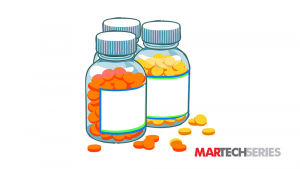The Challenge
The tortoise of digital advertising might pull off yet another win. In 2017, the pharmaceutical industry has learned important lessons from early adopters and is now enjoying enviable success. By focusing on a mobile-first strategy, harnessing the power and sophistication of mobile apps, and utilizing only the best performing placements, pharma’s digital advertising strategy is paying dividends.
The pharmaceutical industry is known for moving slowly due to regulations, policies, and oversight. The Food and Drug Administration (FDA) has not made it easy for the industry to take advantage of the newest advertising technologies and practices. In this regard, pharma sits in good company with the petroleum, alcohol, and tobacco industries. In fact, until the mid-1980’s, drug companies only promoted their products to doctors and pharmacists. Then, in the 1990’s, drug companies started taking their message directly to the consumer via print, TV, and radio ads. Interestingly, only the United States and New Zealand even allow direct-to-consumer advertising in the pharmaceutical industry that includes product claims.
When it comes to advertising, one of the primary challenges that many prescription drug companies face is that they are required to provide full disclosure of risks, side effects, and possible drug complications. For print, TV, and radio, this means a loss of time and space for marketing messages; however, for digital media, the implications can be farther reaching. Packing a 300×250 display ad chock-full of text doesn’t leave room for attention-grabbing imagery or a strong call-to-action, and including 25-30 potential health risks alongside a digital video can dilute the advertisement’s impact.
Read Also: Mobile Advertising TechBytes with Changsu Lee and Benjamin Chen at Tapjoy
Digital Investments
For many years, Pharma sat tight while other industries took risks, worked out the kinks, and developed digital media best practices. In fact, Pharma and healthcare’s current digital ad investment only represents ~3% of total digital ad spend by all industries. Yet digital advertising as a whole represents approximately 37% of total U.S. media spending.
While many industries were discovering that up to 60% of their ads were not seen by real humans (an error that was costing them billions), the pharmaceutical sector took note and delayed jumping on the mobile and social media bandwagons until they learned how to procure quality digital inventory, instead of focusing on quantity.

The pharmaceutical sector is now expected to accelerate its digital media spending in a big way. Leading the charge are mobile and video platforms, with mobile ad spending expected to grow by 45% this year to reach $45.95 billion. For 2015–2020, Pharma and healthcare are together projected to grow at a compound annual growth rate of 13.2%, the fourth fastest growing industry and besting retail, media, telecom, and financial services. And yet there are still challenges. The pharmaceutical sector has been restrained by HIPAA’s (Health Insurance Portability and Accountability Act) privacy rules, which prevent companies from collecting or using personal health information for targeting. This is critical because the addressable audience is harder to identify and more difficult to reach (e.g. arthritis sufferers, cancer patients, and birth control users) than for most other brands.
Through new mobile partnerships with data aggregators and analytics companies, pharma has learned to use third-party data to build custom audience segments targeting specific diseases or illnesses. By combining online and offline data points such as purchase history, site visits, geographical location, and product refill information, these companies help pharmaceutical brands to better communicate with customers in a timely manner. This type of data-driven marketing can be even more impactful on mobile since 75% of store shoppers use their mobile devices while shopping in-store. Pharma companies, for example, could tap into this data in real-time and message customers at the point of sale via their mobile device.
Pharma is all in on mobile. In fact, in a recent study of healthcare, life sciences and pharma companies, 82% of companies said they have a fully-implemented mobile strategy, compared with just 52% of all commercial enterprises one year earlier. The sector is already investing heavily in mobile messaging, location technology, personalization technology, and mobile search. These types of investments make sense because over 60% of smartphone users utilize their mobile devices to search for information about health conditions, according to the Pew Research Center. In fact, in a recent WebMD campaign, mobile outperformed desktop, with 55% more pages views, 20% more time with content, plus an 18% increase in engagement rate due to mobile search.
Pharma, however, does share some traits with its peers in other verticals. In a recent study of 10 major pharma brands, for instance, 80% of the marketing budget was allocated to TV, with the remaining portion allocated to digital/mobile and print. Post-campaign analysis demonstrated that allocating twice the spend to digital (including mobile) would have produced 25% incremental revenue. And mobile advertising overall provides deeper insight into individual engagement over traditional tactics such as TV and print.
Read Also: AerServ Debuts First Cost Per Completed View Programmatic Mobile Video Marketplace For Advertisers
Pharma Apps
People spend over 85% of their time on mobile in-app, so it only makes sense that pharmaceutical brands are getting in on the action. Some brands are taking note and creating unique app offerings. Myrbetriq (a drug for the treatment of overactive bladder) developed the RunPee app, which synchronizes to movies and notifies a user of the best times to run out and not to miss any critical parts of the story. Similarly, Lilly’s Trulicity brand launched a companion app to help diabetes patients remember to take their medications. Zyrtec launched Allergycast, a weather app that learns what people are allergic to, and sends real-time data to medical professionals. And audiences are eager to consume these pharma mobile apps. Allergycast, for example is a ‘top 25’ weather app, achieving over 300k downloads with the average time on app of 15 minutes per month.
The total annual revenue from Health apps was approximately $489 million in 2015, over 40% higher than it was just 5 years before that. In fact, at 42%, the growth of health-related apps has outpaced the overall app growth rate of 38%. By entering the market after it matured, pharma brands also benefitted from improved security and cloud services that make apps faster to build and deploy. With over 3.2 billion Heath app downloads, people are certainly taking a more active role in tracking and managing their healthcare needs.
Mobile Performance
While a focus on mobile and apps has helped propel the pharmaceutical industry’s digital marketing efforts, it is the use of impactful placements like native and immersive video that have allowed the industry to scale its messaging in a way that moves the needle.
Native ads match the look and feel of top editorial publishers. Mobile ads in a native format drive four times higher click through rates than non-native ads and are viewed 53% more frequently than display ads. Many medical publishers also use native ads to drive qualified visitors to their own content. Healthline reports that these units were responsible for about 14% of its revenue in a 6 month period in 2016. However, pharmaceutical brands should proceed with caution, because some native ads can be mistaken for editorial content. Publishers are making special accommodations to win more pharma dollars. Facebook, for example, added a box of scrolling text to the bottom of some native Rx Pharma ads, allowing the full 650 word legal text to fit within the platform’s ad specs.
But it’s not just native ads that are helping pharmaceutical brands achieve success in digital advertising. Pharma has started to produce video content similar to the way entertainment companies produce movie trailers. Pharma brands are including more impactful music, animated characters, and celebrities to improve awareness. In fact, 13% of baby boomers say they are more likely to watch a pharmaceutical video ad to completion when it includes an influencer or a celebrity. Lauren Bacall, Rob Lowe, Kelsey Grammer, and Bob Dole have all been featured in recent video campaigns. Additionally, pharma brands have been going all-in on video distribution, launching new creative content to coincide with big events like the Super Bowl. Content is no longer a laundry list of benefits, but rather communicates a real solution via a story with a beginning, a middle, and an end.
Celtra (a digital ad company) helps brands make their content even more immersive by enhancing video and other assets with custom data feeds to recommend medication based on weather patterns, pollen levels, and so on. Additionally, over 75% of all rich media impressions requested via Celtra were delivered over mobile phones, with 60% of those coming from in-app placements. In a rich media study by Servo and Medialets, Pharma achieved the top CTR, besting CPG and Retail fourfold.
Mobile, in-app, and immersive placements have been game changers for pharma, and new performance units like value exchange have also yielded very strong results. Value exchange is a powerful way to distribute video and branded content because it is virtually fraud-free and non-interruptive. These placements let people actively choose to engage with a brand in exchange for entertainment, points, Wi-Fi or other digital content. At Jun Group, pharma clients see on average an 87% video completion rate for a 60 second video with engagement rates that are 2-5%, and brand lift that measures ~26%.
Pharma is getting digital advertising right. The industry’s wait-and-see approach has allowed it to benefit from best practices and billions of dollars of testing from other, faster-moving advertisers. Through a focus on mobile, applications, and new immersive ad placements, the industry has become one of the fastest growing verticals in digital advertising. All eyes are on Pharma in 2017 as the industry continues to expand its presence deeper into digital advertising.
Read Also: 8 MarTech Firms Selected by R/GA Represent the Future of Mobile Marketing & Advertising











